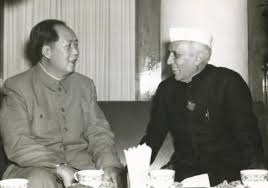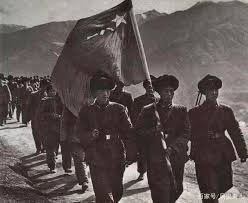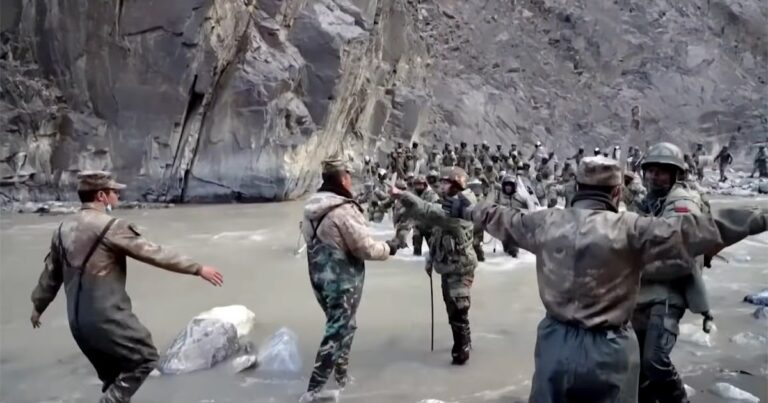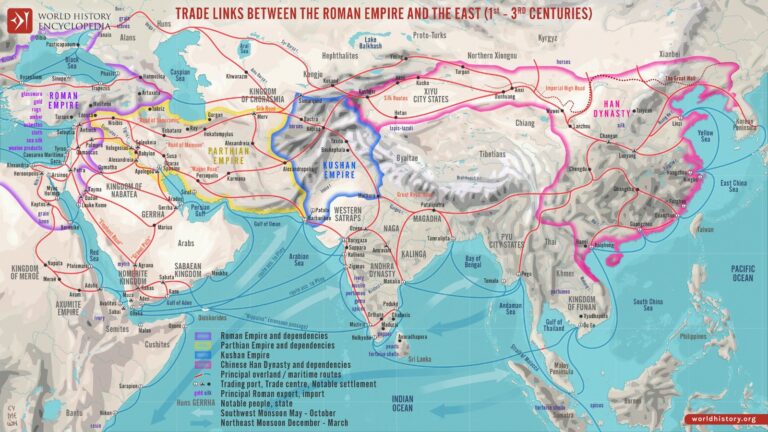A Territory Hard To Claim: India-China Border Disputes
Everybody is aware of India’s tense relationship with Pakistan. What about China? Do we give it enough attention? Let’s take a look at what’s been happening lately with the “Hindi-Chini, Bhai-Bhai” liaison.
Once upon a time, they were friends.
Starting on a good note, India and China had established peaceful relations before the catastrophe hit. India was the first non-communist country to begin a diplomatic bilateral relationship with China. But does it start here?
Surprisingly, the friendship can be traced back to at least 2nd Century B.C.
It is interesting to read about how cultures were exchanged through Buddhism. Records from the 2nd century are important for observing how Chinese monks like Fa Xian and Xuan Zang brought with them the way to cement the Indian-Chinese relationship. Chinese translations of Sanskrit and Buddhist texts by Fa Xian, who lived in India for a decade, are an important historical resource for historians.
The iconic Silk Route is an important link between India and China that facilitates their economic contact. From goods such as silk and spices to the exchange of ideas, the Silk Route is truly a wonder for globalisation.
From the 2nd Century to the early 20th century, peaceful Indo-Chinese relations were maintained. Indian leaders such as Subhash Chandra Bose, Jawaharlal Nehru, Mahatma Gandhi and others have always felt for a stronger bond between the two nations. India had always come to help China when it needed the most during the Second Sino-Japanese War. India had sent medical teams to provide humanitarian aid to its friend. Rabindranath Tagore had always supported the Chinese stance against imperialism.
Coming back to modern times when India was the first country to put its trust in Mao Zedong’s Regime and establish diplomatic relations with China in 1950, cordial relations were maintained.

After the formation of the Indian Embassy, treaties were signed between the two countries. The famous ‘Panchsheel Agreement’ of 1954 – A treaty for peaceful co-existence.
A sting of betrayal, LAC was created.
‘Sometimes we have differences, but we do not quarrel’ – Nehru when he met Mao in 1954 at the Indian Embassy in China.
Except they did quarrel. The evil eye was cast on the friendship and it led to the first Sino-Indian war between the two friends. The trust of Indian leaders in China was so sincere that they never expected an attack from them.
In 1962, China invaded Aksai Chin in Kashmir and took the Indian troops by surprise. The argument that China gave was that it did not like India’s interference in its annexation of Tibet. China’s occupation of Aksai Chin was because Aksai Chin was part of the Chinese Empire in ancient times. The time when borders were not given the ultimate importance. But then why did China have no objection to Aksai Chin being a part of India before it became an integral part of Indian territory a few years after 1950?


“According to China’s official military history, the war achieved China’s policy objectives of securing borders in its western sector.” – India Today’s Article.
The aftermath of the war was that it created the Line of Actual Control (LAC) which demarcates the Indian-controlled territory and Chinese-controlled territory. The LAC was first proposed in 1959 by Chinese Premier Zhou Enlai but India had rejected it then. India had doubts about China’s intentions. However, after the war, the LAC became the de facto border between the two countries.
Although the efforts of restoration were made, for many years, diplomatic tensions lingered in the air. It was after 1978, that we saw the relations getting better as economic ties improved and China became India’s largest trading partner in the 2000s.
Galwan- A non-armed battle
For two decades, India and China had stable diplomatic relations with a random stir of tension in between. Until the incident of Galwan happened. The pandemic brought with it a serious conflict which broke out in June 2020 in the Galwan Valley- Indian Controlled Ladakh. Galwan Valley, though an isolated location, turned out to be strategically important for it leads to the disputed Aksai Chin.
What caused this conflict? India had set fire to two tents and observation towers which it found while patrolling. This triggered China to retaliate.
Even though they agreed on disengagement, their troops had not backed out and so what followed was the first battle between the two countries after 1962. The twist was – There were no armaments used to avoid escalation as per an old agreement.
Soldiers fought with light rods and hand-to-hand battles and stones. However, the lost lives of the 20 soldiers reflect the gravity of the situation. China decided to not reveal their losses but later admitted to losing 4 soldiers.

Expectedly, soon after the Galwan Conflict, both countries strengthened their military action on the borders creating an environment of distrust and tension.
Both sides sent thousands of additional troops, tanks, and fighter jets to the border.
China and India had complex, working bilateral relations but after Galwan, India did not consider China a reliable diplomatic partner. The incident pushed India closer to its Quad Alliance members such as the US, Australia, Japan, etc.
The most powerful impact was the economic implication of this chaos. There was a massive outrage among the public to boycott Chinese products in India. The Indian Government banned over 300 Chinese apps. For example – TikTok, PUBG, etc.
The trade between India and China remains strong even in 2023, India has turned towards the policy of self-reliance to reduce its dependency on Chinese goods.
Recent Indo-China Developments – Friends or Foe?
It’s hard to determine in recent times whether China can be called a Friend or a Foe. On the global stage, China and India do behave cordially and the next moment, China does not hesitate to send threats to India.
In March 2024, China warned India to “cease any action that may complicate the border question” concerning the inauguration of the Sela Tunnel in Arunachal Pradesh. The state of Arunachal Pradesh has always been in the eyes of China which it claims as its own even though it has been a part of India for years.
On the other hand, China goes on to build the world’s largest dam on the Brahmaputra River close to the Indian border. India is concerned that during difficult times, China may flood the border areas through this. Also, The dam could lead to a power tussle between India and China over water resources. India has raised strong objections against this deal.
In October 2024, India and China agreed on disengagement to de-escalate the tensions persisting at the border from 2020. They agreed on several patrolling arrangements along the LAC. India and China completed disengagement at Depsang and Demchok, two of the friction points.
A couple of months later, China announced two counties, He’an and Hekang, on the land of Aksai Chin which has been a sensitive spot for decades. Such announcement of illegal occupation is not accepted by India. We have never accepted the illegal Chinese occupation of Indian territory in this area.
Such contradictory actions have put China under scrutiny.
‘‘Creation of new counties will neither have a bearing on India’s long-standing and consistent position regarding our sovereignty over the area nor lend legitimacy to China’s illegal and forcible occupation of the same,’’ said Mr Randhir Jaiswal, Ministry Of External Affairs.
Conclusion
China is not a country that likes to stay in a feud continuously. Its strategy is to stir up the peace occasionally. However, one cannot see the same India-China Relationship as it was before 1962. Both countries co-exist with occasional quarreling but the trust from both sides has been lost. India’s resiliency to China’s unreliable and unpredictable actions is applaudable. With the still-ongoing border disputes, any improvement in Chinese tactics is not expected. The positive outcome of all of this is that India now takes a strong stance against its neighbours.
Thanks for reading, fr! Share if you like it enough. Follow us on Instagram & LinkedIn for more.



